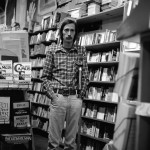Thursday, October 13, 2016
THE GALLANTRY OF BOB DYLAN, WINNER OF THE 2016 NOBEL PRIZE IN LITERATURE
A dozen or so years ago, as I was finishing up my Ph.D. dissertation and working as a teaching assistant in the Humanities Program at Revelle College at UCSD, I had the good fortune to be assigned to William Arctander (“Billy”) O’Brien, an absolutely brilliant professor whose specialties included the final installment of a “Great Books” survey for undergraduates, most of whom were pre-med students. This intellectual forced march began in the Winter quarter of the students’ first year, and often started with Homer and Plato. By the end of their sophomore year, in the fifth quarter, the students were often reading Nietzsche and Beckett. O’Brien was the first professor I ever met who included Bob Dylan on his syllabus for this course, and O’Brien most certainly should be savoring his prescience in acknowledging the canonical value of Bob Dylan’s writing. So, too, should Steve Axelrod, whose recent three-volume anthology of American poetry includes a solid set of Bob Dylan’s lyrics (in Volume three, “Postmodernisms”). O’Brien, though, was far ahead of the curve and deserves considerable applause for his academic courage.
Following O’Brien’s example, I also teach Bob Dylan’s lyrics as part of a “Survey on Poetry” course at CSULB, and have always been puzzled at the unwillingness of so many other professors to include him. I doubt that the bestowal of the Nobel Prize on Bob Dylan will change their minds. For many contemporary poets, not much has changed since Robert Lowell conceded in the mid-1960s that Bob Dylan had written some fragments that might be considered poetry, but that he had not written anything that stood on its own all the way through as a poem. Lowell was essentially saying that music had to intervene and prolong the poetic touch of Dylan’s lyrics at the point that language failed in his verses.
It is after citing Lowell in my classes that the students read “Love Minus Zero/No Limit.” No music is played; no singing is heard. We look at the words on the page, and ask if they hold up as a poem. Indeed, the words do sustain the entire poem, and even more remarkably, it also turns out to have been set to a quietly imploring melody. Having established that Bob Dylan’s writing does more than partake of the “poetic,” but unfolds its essential imaginative logic with as much negative capability as Keats ever asked of a poem, we move on to a consideration of David Antin’s observation that Dylan is essentially a collage artist, a description that is most useful when examining “Desolation Row.”
Since teaching Literature always involves introducing student to formal terms, it is at this point that I define epistrophe for the students, and during my remarks on “Desolation Row” I offer other examples of this rhetorical technique. I noticed that the newspaper articles carrying the announcement of this year’s Nobel Prize in Literature cite many of the musical influences on Bob Dylan, as well as those whose work he has in turn influenced. Not a single article has mentioned Robert Burns, the poet whom Dylan acknowledged as having influenced his songwriting. In particular, of course, Burns would have been an influence in Dylan’s use of epistrophe, starting with “Hard Rain” and “Desolation Row.” “Tangled Up in Blue” remains one of the masterful instances of that ancient rhetorical arrangement, and it would behoove contemporary poets to follow Dylan’s example and draw upon Burns as a model.
One of the pivotal questions about Bob Dylan’s status as a writer and poet is ultimately not about him, but about his audience, for it is not just the selection of Robert Zimmerman (aka Bob Dylan) for this award that irks those who still cling to Robert Lowell’s assessment. Rather, it is the gnawing suspicion that this award in some way legitimates the audience that Dylan’s writings and music have attracted. “Do the people in his audiences read other books? Other poets?” Behind the all too foreseeable backlash to Dylan’s award, it will not be too difficult to detect a residual fear of the illiterate masses, whose preferences are easily seduced by a charismatic performance in the oral tradition.
I have no doubt that a significant number of people who listen to Dylan’s songs do not spend much time reading the poetry found in contemporary anthologies. His audience, however, also includes many poets whose commitment to their art was shaped by his vision of the public role that a poet could play, if only one dared to be audacious enough. Such a quest requires the one quality that Dylan himself assessed as possibly being the most enduring virtue of his writing: a sense of gallantry. I call upon those who feel reluctant to applaud the award of the Nobel Prize to Bob Dylan to remind themselves of this archaic ideal and to reexamine their own lives and writing within that context.
Post-script:
Thanks to Twitter, I learned of a link to a very thoughtful essay on Bob Dylan by Robert Polito:
http://riggio.americanvanguardpress.com/portfolio/bob-dylans-memory-palace-robert-polito/

 About Bill Mohr
About Bill Mohr